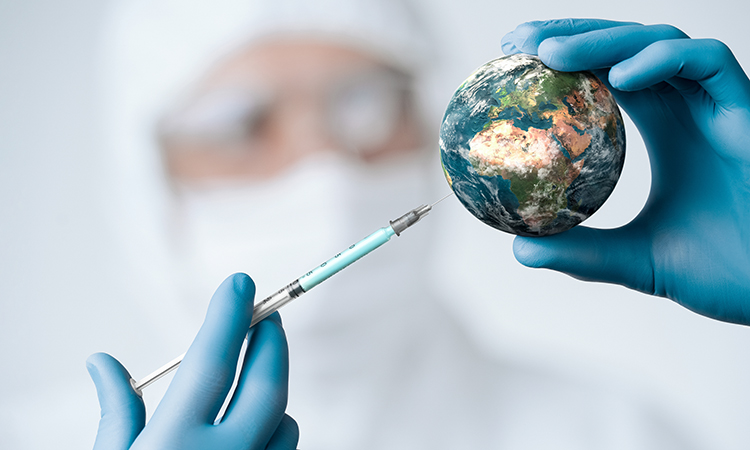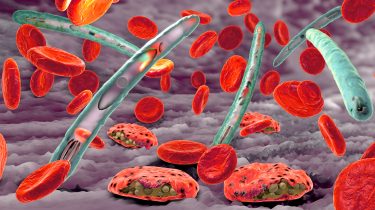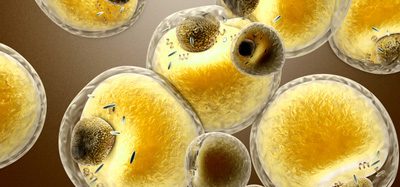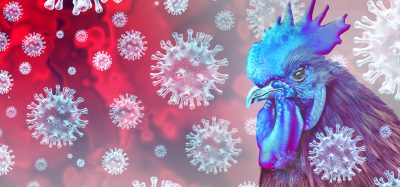Addressing the grand challenge of global access to vaccines
Posted: 19 July 2023 | Brian Finrow (Lumen Bioscience), Dr Tracy Saveria (Lumen Bioscience), James Roberts (Lumen Bioscience) | No comments yet
Tracy Saveria, James Roberts and Brian Finrow from Lumen Bioscience discuss progress in the aspiration for global vaccine access and how Lumen Bioscience’s inhalation malaria vaccine represents a major step towards it.


The mad scramble1 for -80°C freezers during the COVID-19 pandemic is a vivid illustration that we remain unprepared to harness the global potential of vaccine therapeutics. Although it is true that requirements have since been relaxed for those particular vaccines, cold-chain distribution remains a major barrier that has drawn significant funding, including from Bill Gates.2
However, it is not just problematic cold chains that limit access to life-saving vaccines. Most vaccines cannot be self-administered, so distribution requires access to trained healthcare services – a big problem in developing countries, which is where infectious disease burdens are highest. Moreover, up to 50 percent of people suffer from trypanophobia (fear of needles), which further limits access. Together these factors present an unsolved grand challenge in global health; one that has stubbornly resisted decades of effort and investment.
Fortunately, new technology developments may be about to change this. Thanks to recent breakthroughs3 in cell engineering and photosynthetic biomanufacturing, it is now possible to cost-effectively manufacture, at large scale, mucosally delivered biologics. A leading company in this field, Seattle’s Lumen Bioscience, is best known for its orally delivered antibodies targeting diseases such as C. difficile infection4, inflammatory bowel disease and traveller’s diarrhoea.5 Each of these investigational new drugs have the following appealing features:
- They are shelf-stable at ambient temperatures
- They can be self-administered without injection
- They are inexpensive to manufacture at scales large enough to meet demand for highly prevalent, global diseases.
Thanks to this new technology, another class of biologic – the protein subunit vaccine – is also poised to address the distribution problem of conventional vaccines. A vaccine with all the distribution advantages of Lumen’s other products could make a major impact in malaria, one of the world’s most deadly6 infectious diseases still lacking a fieldable vaccine. Owing to the bold vision7 of Lumen’s funding partners at the US National Institutes of Health, we are about to find out.
Malaria vaccines: searching for the Holy Grail
This year marks the golden anniversary of the publication8 by David F Clyde, which reported that immunisation of humans with killed malaria parasites protects against malarial disease. Clyde’s work built on Ruth Nussenzweig’s initial demonstration9 that this strategy was effective in mice. Together, these studies launched the modern era of research into pre-erythrocytic malaria vaccines. This approach targets the parasite at its early sporozoite stage – the point at which the pathogen is released from the salivary glands of the biting mosquito and enters the human bloodstream. The aim is to eradicate the parasite before it matures into the disease-causing erythrocytic form.
Translating these insights into a licensed vaccine (RTS,S, made by GlaxoSmithKline) took nearly five decades – a glacial pace compared to the recent COVID-19 vaccines. The latter were necessitated by a global pandemic that prompted a swift response in the face of rapidly increasing mortality. Development was also fuelled by an avalanche10 of public funding. Malaria, in contrast, has co-existed with humans throughout history and today primarily affects just those living in low- and middle-income countries, areas disproportionately burdened by limited resources, especially an inadequate healthcare infrastructure. While these inequities are certainly a factor in why malaria vaccines have taken so long to realise, progress has also been impeded by the biological complexity of these eukaryotic pathogens. Notably, RTS,S is the first vaccine to garner approval against any parasitic disease in humans.


Unfortunately, despite its groundbreaking status, RTS,S has only modest efficacy. Results from Phase III randomised trials showed that in children between five and 17 months who were given three doses, vaccine efficacy was only 28 percent, while a fourth dose increased efficacy to a mere 36 percent. Nevertheless, its implementation will save tens of thousands of lives, primarily children who account for 80 percent of malaria deaths.
A newer vaccine called R21 (University of Oxford) uses the same approach but rearranges the basic design of RTS,S to present the relevant antigen more abundantly for improved potency. Currently in Phase III trials, R21 has already showed improvement over RTS,S. Up to 75 percent efficacy has been observed in young children across all test sites with no safety concerns, and up to 80 percent for children between five and 17 months old. This apparently exceeds the goal of the Malaria Vaccine Technology Roadmap,11 which calls for a next-generation vaccine with at least 75 percent two-year efficacy.
Notably, however, neither vaccine makes any strides towards solving the grand challenge of global accessibility: both are injected and will require cold-chain distribution. Like many infectious diseases worldwide, malaria is concentrated in areas of the world burdened by inadequate healthcare infrastructure and limited resources. These limitations are compounded by the waning immunity observed in all malaria vaccine candidates, which necessitates multiple booster doses.
In short, while there is little doubt that RTS,S and R21 will decrease overall malaria morbidity and mortality, more work will be needed to achieve total elimination.
Lumen’s malaria vaccine
These problems are not unique to malaria: many neglected tropical diseases face similar challenges. At Lumen, we have developed a platform for generating therapeutics in the edible microalgae, Arthrospira platensis, commonly known as spirulina. Seven years ago, Lumen scientists discovered methods for genetic engineering of spirulina and production of exogenous proteins, such as vaccine antigens.10 Simple and inexpensive upstream growth combined with minimal downstream processing allow biologic drugs to be manufactured in the spirulina platform both at large scale and exceptionally low cost. Conveniently for distribution in low- and middle-income countries, these products are also shelf-stable without refrigeration.


Malaria is the first human infectious disease that Lumen has targeted with its active vaccine platform. Essentially, Lumen’s antigen design is very similar to RTS,S and R21: a virus-like particle that presents the NANP repeat antigen to the host immune system. But there is a clever twist: rather than injection delivery, it is formulated for intranasal delivery to the airway mucosa and expressed in spirulina rather than a conventional biomanufacturing platform. This makes manufacturing far cheaper and more scalable and eliminates refrigeration requirements.
In collaboration with scientists at the University of Washington led by Dr Sean Murphy, we recently published11 initial results from this NIH-funded programme. The data show that intranasal airway delivery is sufficient to generate a robust systemic and mucosal antibody response in mice that is strong enough to protect them from sporozoite challenge even months after the final dose is given. Examining the roles of systemic and mucosal antibodies in protection against malaria will be a pivotal feature of the next set of studies in non-human primates.
Our malaria vaccine overcomes many of the challenges that limit global vaccine access. We envision global deployment at low cost for use either as a stand-alone vaccine regimen, or as a boosting strategy for more conventional needle and cold chain-dependent priming vaccines. If successful, it could put malaria in the history books where it belongs.
Author biographies:


Dr Tracy Saveria is Scientist II at Lumen Bioscience


James Roberts is Co-founder and Chief Scientific Officer of Lumen Bioscience. Prior to founding Lumen, Dr. Roberts was Professor and Chair of the Basic Sciences


Brian Finrow is Co-founder and Chief Executive Officer of Lumen Bioscience.
References:
- SoCal pharmacies scrambling for ultra-cold freezers for pfizer COVID vaccine storage [Internet]. ABC7 Los Angeles. 2020. Available from: https://abc7.com/pfizer-vaccine-coronavirus-covid-19-dry-ice/7933931/
- Project B. Arktek: Keeping vaccines cool [Internet]. The Borgen Project. Borgen Project https://borgenproject.org/wp-content/uploads/logo.jpg; 2020. Available from: https://borgenproject.org/arktek-keeping-vaccines-cool/
- Jester BW, Zhao H, Gewe M, Adame T, Perruzza L, Bolick DT, et al. Development of spirulina for the manufacture and oral delivery of Protein therapeutics. Nature Biotechnology. 2022;40(6):956–64.
- Zhao H, Dodds M, Tasch M, Gewe M, Martinez A, Hutton M, et al. Using synthetic activity to design ultra-potent antibody cocktails. biorxiv. 2021;
- Finrow B. High impact drugs at dirt cheap cost [Internet]. Medium. Medium; 2021 [cited 2023Mar7]. Available from: https://finrow.medium.com/high-impact-drugs-at-dirt-cheap-cost-771a3667affe
- Foster L. 5 of the world’s deadliest infectious diseases [Internet]. World Economic Forum. Available from: https://www.weforum.org/agenda/2020/04/covid-19-infectious-diseases-tuberculosis-measles-malaria/
- Bioscience L. Lumen Bioscience awarded federal funding to advance covid-19 antibody cocktail through phase 2 clinical evaluation: Lumen Bioscience [Internet]. Lumen Bioscience Awarded Federal Funding to Advance Covid-19 Antibody Cocktail through Phase 2 Clinical Evaluation | Lumen Bioscience. 2021. Available from: https://www.lumen.bio/news/lumen-bioscience-awarded-federal-funding-advance-covid-19-antibody-cocktail-through-phase-2
- Clyde Davidf, Most Harry, Mccarthy Vincentc, Vanderberg Jeromep. Immunization of man against sporozite-induced falciparum malaria. The American Journal of the Medical Sciences. 1973;266(3):169–77.
- Nussenzweig RS, Vanderberg JP, Sanabria Y, Most H. Plasmodium berghei: Accelerated clearance of sporozoites from blood as part of immune-mechanism in mice. Experimental Parasitology. 1972;31(1):88–97.
- Cohen J. Unveiling ‘warp speed,’ The White House’s America-first push for a … [Internet]. Science. 2020. Available from: https://www.science.org/content/article/unveiling-warp-speed-white-house-s-america-first-push-coronavirus-vaccine
- Malaria vaccine roadmap [Internet]. PATH’s Malaria Vaccine Initiative. 2020. Available from: https://www.malariavaccine.org/malaria-and-vaccines/malaria-vaccine-roadmap
Related topics
Animal Models, Antibodies, Antibody Discovery, Vaccine development
Related conditions
Malaria
Related organisations
GlaxoSmithKline (GSK)








